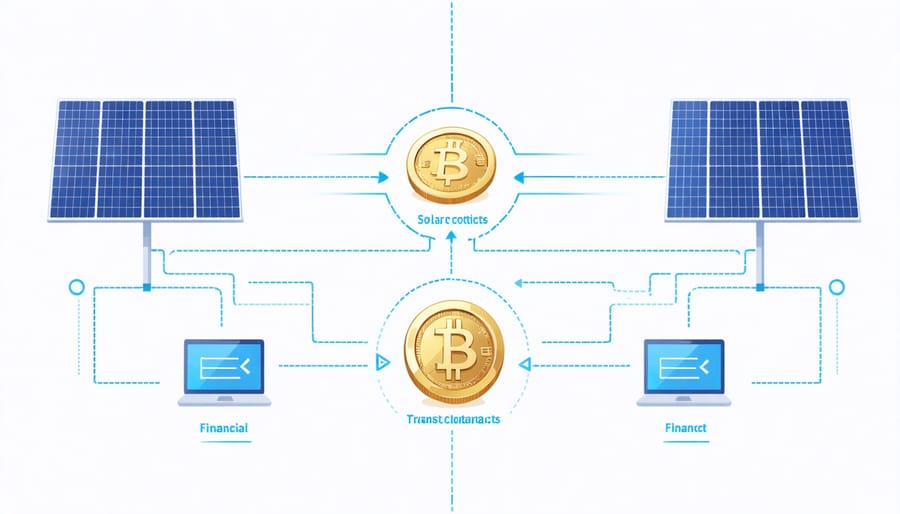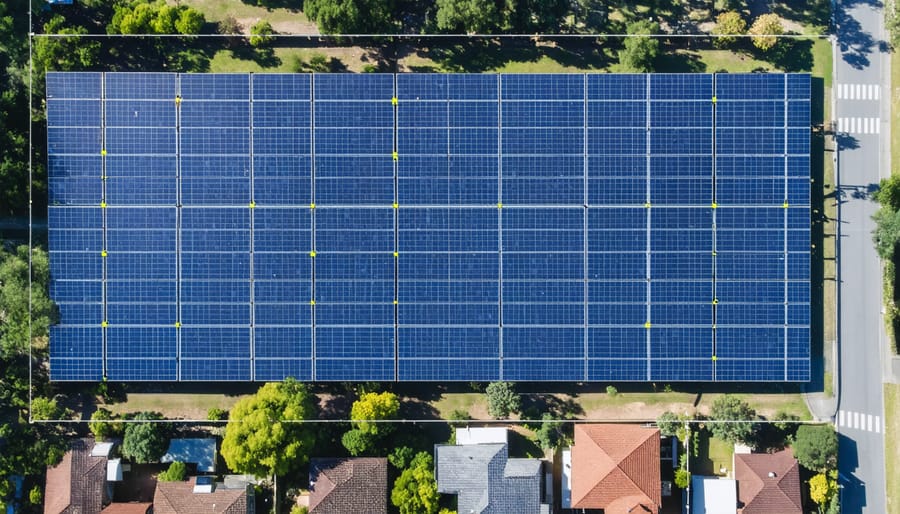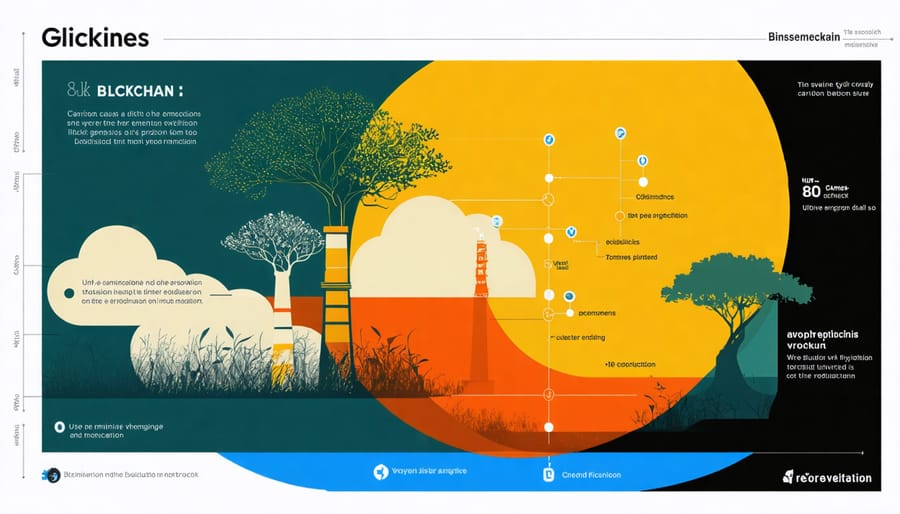Blockchain technology is revolutionizing sustainability efforts by creating transparent, decentralized systems that transform how we track, trade, and verify environmental initiatives. As organizations worldwide grapple with climate challenges, blockchain technology fundamentals are enabling unprecedented innovations in carbon credit trading, renewable energy certification, and sustainable supply chain management. From empowering small-scale solar producers to sell excess energy directly to neighbors, to validating corporate environmental claims through immutable digital ledgers, blockchain solutions are creating a new paradigm for environmental accountability.
The convergence of sustainability and distributed ledger technology offers a powerful toolkit for addressing climate change while fostering economic growth. By eliminating intermediaries and reducing verification costs, blockchain platforms are democratizing access to green financing and enabling previously impossible forms of environmental collaboration. This technology’s ability to create trust through transparency is particularly relevant in Australia, where remote communities can now participate in renewable energy markets and carbon offset programs with the same efficiency as major urban centers.
These innovations aren’t just theoretical – they’re already driving measurable environmental impacts while generating new business opportunities in the sustainable economy.
How Blockchain Makes Green Energy Financing Simple
Smart Contracts: The New Energy Investment Gateway
In the evolving landscape of renewable energy investments, smart contracts are emerging as game-changers, particularly in Australia’s burgeoning sustainable energy sector. Understanding how smart contracts work is crucial for grasping their transformative potential in streamlining renewable energy investments.
Think of smart contracts as digital deal-makers that automatically execute agreements when specific conditions are met. For renewable energy projects, this means investors can participate in funding solar farms or wind installations with unprecedented efficiency and transparency. When a project reaches its funding milestone or generates a certain amount of energy, the smart contract automatically triggers payments and distributes returns to stakeholders.
The Power Ledger project in Western Australia showcases this brilliantly. Their blockchain-based platform uses smart contracts to enable peer-to-peer energy trading, allowing households with solar panels to sell excess energy directly to neighbours. The entire process – from energy measurement to payment settlement – happens automatically and securely.
Smart contracts also reduce investment barriers by fragmenting large renewable projects into smaller, more accessible investment units. This democratisation of energy investment means everyday Australians can participate in the renewable energy revolution with investments as small as a few hundred dollars, while having their interests protected by tamper-proof digital agreements.
For project developers, smart contracts eliminate costly intermediaries and streamline compliance reporting, making renewable energy projects more financially viable and easier to manage.

Tracking Energy Credits with Unbreakable Records
In the world of renewable energy, keeping track of green energy certificates has traditionally been a complex and sometimes unreliable process. Blockchain technology is revolutionising this space by creating immutable, transparent records of renewable energy generation and trading.
Consider the case of South Australia’s virtual power plant network, where thousands of households with solar panels are now trading energy credits using blockchain technology. This system ensures that every kilowatt-hour of clean energy is accurately tracked and credited, eliminating the possibility of double-counting or fraud.
The beauty of blockchain-based energy credit tracking lies in its simplicity and reliability. When a solar panel generates electricity, the event is recorded as a digital token on the blockchain. These tokens can be traded directly between energy producers and buyers, creating a trustworthy marketplace for renewable energy certificates.
Major Australian energy retailers are already implementing blockchain solutions to streamline their renewable energy certificate trading. For instance, the Powerledger platform in Western Australia has demonstrated how blockchain can facilitate peer-to-peer energy trading while maintaining transparent records of all transactions.
The impact extends beyond just trading. Blockchain technology enables real-time verification of renewable energy sources, helping organisations meet their sustainability goals with confidence. This transparency is particularly valuable for businesses committed to achieving net-zero emissions, as they can now verify the authenticity of their renewable energy purchases with unprecedented accuracy.
Real Success Stories: Blockchain-Powered Projects in Australia
Perth’s Solar Sharing Network
In the heart of Western Australia, Perth’s innovative Solar Sharing Network stands as a shining example of how blockchain technology is revolutionising renewable energy distribution. This groundbreaking initiative, launched in 2016, enables Perth residents to trade excess solar energy directly with their neighbours using smart contracts and blockchain technology.
The network operates through a sophisticated yet user-friendly platform where households with solar panels can sell their surplus energy to nearby homes at rates that benefit both parties. When the Smith family in Fremantle generates more solar power than they need on a sunny afternoon, instead of feeding it back to the grid at a minimal feed-in tariff, they can sell it directly to the Jones family next door at a mutually agreed price.
What makes this system particularly effective is its transparency and automation. Smart meters connected to the blockchain platform track energy production and consumption in real-time. When excess energy is available, the system automatically matches sellers with buyers, executes the transaction, and records it immutably on the blockchain.
The results have been remarkable. Participating households have reported average savings of 15-20% on their energy bills, while solar panel owners have increased their return on investment by up to 30%. The network has also significantly reduced the strain on Perth’s main power grid during peak hours.
Beyond the financial benefits, the initiative has fostered a stronger sense of community engagement in sustainable practices. Neighbours are now actively collaborating in their energy consumption patterns, sharing tips for maximising solar efficiency, and collectively contributing to a reduction in carbon emissions. This successful model is now being studied by other Australian cities looking to implement similar peer-to-peer energy trading systems.

Melbourne’s Community Solar Fund
Melbourne’s innovative Community Solar Fund demonstrates how blockchain technology is revolutionizing local renewable energy investments. Launched in 2021, this groundbreaking initiative enables residents to invest as little as $50 in neighborhood solar projects, making sustainable energy funding accessible to everyday Australians.
The platform uses smart contracts on a public blockchain to manage investments, track energy generation, and distribute returns transparently. This system eliminates traditional intermediaries, reducing costs and ensuring that investors can monitor their contributions in real-time.
One notable success story is the Brunswick Community Solar Project, where 350 local investors collectively raised $280,000 to install solar panels on five community buildings. The blockchain platform automatically records energy production and calculates returns, with investors earning an average 5.8% annual return while reducing the community’s carbon footprint by 150 tonnes annually.
The fund’s blockchain infrastructure also enables a unique “solar credit” trading system, where excess energy credits can be bought and sold among community members. This creates a local energy marketplace that maximizes solar resource efficiency and keeps benefits within the community.
What sets this initiative apart is its combination of social impact and financial returns. Small-scale investors can directly support their local community’s transition to renewable energy while earning competitive returns. The transparent nature of blockchain technology has built trust among participants, with 87% of initial investors reinvesting in subsequent projects.
The Melbourne Community Solar Fund serves as a blueprint for other Australian cities, showing how blockchain technology can democratize renewable energy investment while fostering community engagement in sustainability initiatives.
Environmental Impact: Beyond the Technology
Carbon Footprint Reduction
Blockchain technology is revolutionizing the way we approach reducing carbon emissions through innovative tracking and verification systems. In Australia, several groundbreaking projects have demonstrated significant environmental benefits by leveraging blockchain solutions.
The Byron Bay Solar Farm project, for example, has achieved a 45% reduction in carbon emissions since implementing blockchain-based energy trading. The system enables precise monitoring of renewable energy generation and consumption, ensuring that every kilowatt of clean energy is accurately tracked and credited.
Smart contracts on the blockchain have automated the verification of carbon offsets, eliminating the need for paper-based documentation and reducing administrative emissions. In Melbourne’s commercial district, this automation has helped businesses decrease their carbon footprint by an additional 15% through more efficient energy allocation and trading.
The technology’s transparency has also improved accountability in carbon credit markets. The Australian Carbon Credit Units (ACCUs) tracking system, built on blockchain, has prevented double-counting and ensured the authenticity of carbon credits, leading to a 30% increase in verified emission reductions.
Perhaps most impressively, blockchain-enabled peer-to-peer energy trading networks have reduced grid transmission losses by up to 25% in pilot communities across Queensland. By enabling direct energy trading between neighbors, these systems minimize the distance electricity needs to travel, significantly reducing infrastructure-related emissions.
Through these practical applications, blockchain technology is proving to be a game-changer in Australia’s journey toward a more sustainable future.

Community Benefits
Blockchain technology is revolutionising how local communities participate in and benefit from sustainable energy initiatives. In regional Australian communities, blockchain-enabled microgrids are empowering residents to trade excess solar energy directly with their neighbours, creating new income streams while strengthening community bonds. These peer-to-peer energy trading systems have already shown promising results in towns like Byron Bay, where participants report up to 25% savings on their energy bills.
The technology also enables transparent carbon credit trading, allowing communities to monetise their environmental efforts. Indigenous communities, in particular, are finding new opportunities to benefit from their traditional land management practices through blockchain-verified carbon credits. This system ensures fair compensation while maintaining cultural connections to the land.
Beyond energy trading, blockchain platforms are fostering local economic development through sustainable project funding. Community-owned renewable energy projects can now raise capital through tokenisation, giving residents direct ownership stakes in local infrastructure. This democratisation of energy investments keeps wealth within communities while accelerating the transition to clean energy.
The social benefits extend to improved transparency and trust in environmental initiatives. Smart contracts automatically verify and record sustainability achievements, helping communities showcase their environmental leadership and attract eco-tourism. This technology-enabled accountability also strengthens relationships between communities and corporate partners, ensuring fair distribution of benefits from sustainability projects.
Future-Proofing Your Green Energy Investment
As we move towards a greener future, making smart sustainable energy investments requires careful consideration of emerging technologies and market trends. Blockchain technology is revolutionising the renewable energy sector, and savvy investors are positioning themselves to benefit from this transformation.
To future-proof your green energy investments, consider these key strategies. First, focus on projects that integrate peer-to-peer energy trading capabilities. These systems allow households and businesses to trade excess solar power directly, maximising return on investment while supporting community energy independence. Many Australian communities are already implementing such networks, particularly in regional areas where traditional grid infrastructure may be less reliable.
Look for initiatives that incorporate smart contracts and automated compliance systems. These blockchain features can significantly reduce administrative costs and ensure transparent tracking of renewable energy certificates. Projects using standardised protocols and open-source technology tend to have better long-term viability and adaptation potential.
Consider diversifying your investment across different types of renewable energy projects. While solar remains popular in sun-rich Australia, wind and bioenergy projects are increasingly incorporating blockchain solutions for better resource management and trading capabilities. This diversification helps protect against market fluctuations and technological changes.
Pay attention to projects that demonstrate strong partnerships with established energy providers and regulatory bodies. These relationships often indicate better integration potential and reduced regulatory risks. Several Australian utilities are already piloting blockchain-based solutions, providing valuable insights into future industry directions.
Finally, stay informed about emerging trends in tokenization of renewable energy assets. This innovative approach allows smaller investors to participate in large-scale renewable projects, creating new opportunities for portfolio diversification. Look for platforms that offer clear documentation, strong security measures, and transparent governance structures.
Remember, the key to success lies in choosing solutions that balance innovation with practical implementation. The most promising investments will be those that solve real-world problems while maintaining flexibility for future technological advancements.
As we stand at the crossroads of technological innovation and environmental stewardship, blockchain technology emerges as a powerful catalyst for sustainable energy financing. The transformative potential of this technology extends far beyond cryptocurrency, offering a future where renewable energy investments are more transparent, efficient, and accessible to all Australians.
The success stories we’ve explored demonstrate how blockchain is already revolutionising the energy sector, from community solar projects in regional towns to large-scale wind farms across the country. These innovations aren’t just theoretical – they’re creating real impact, reducing carbon emissions, and generating returns for forward-thinking investors.
The time to act is now. As climate change continues to pose unprecedented challenges, blockchain offers a practical solution to accelerate our transition to renewable energy. Whether you’re an individual investor, business owner, or policymaker, there are immediate opportunities to engage with this technology and contribute to a more sustainable future.
By embracing blockchain-enabled energy financing, we can build a more resilient and sustainable energy infrastructure for future generations. The technology is ready, the market is maturing, and the environmental benefits are clear. Let’s seize this moment to transform how we fund, manage, and distribute renewable energy across Australia.
Together, we can create a future where sustainable energy isn’t just an alternative – it’s the norm. The journey toward this future starts with understanding and implementing blockchain solutions today.

